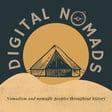
The Transformation of Livestock Herding in Socialist Mongolia
Between 1956 and 1960, leaders in the Mongolian People’s Republic embarked on a collectivization campaign to change the way in which Mongolians interacted with animals and the environment. Collectivization in Mongolia, which followed the Soviet model, confiscated private livestock to create collectively-owned and -worked livestock herds, and was seen as one of the building blocks of a modern socialist state. In a society where nomadic herders represented a large segment of the population, however, the process of collectivizing livestock herds took a different form than it did in other socialist contexts, and, post-socialism, many former leaders and collective members remember fondly the state of herding during socialism compared to the uncertainty that followed during the transition to capitalism.
In this episode, Dr. Kenny Linden joins me to share his research into the animal, cultural, and environmental history of livestock herding in socialist Mongolia and to discuss adaptations of pastoralism to socialist conditions.
Maggie Freeman is a PhD student in the School of Architecture at MIT. She researches uses of architecture by nomadic peoples and historical interactions of nomads and empires, with a focus on the modern Middle East.
Learn more about your ad choices. Visit megaphone.fm/adchoices
